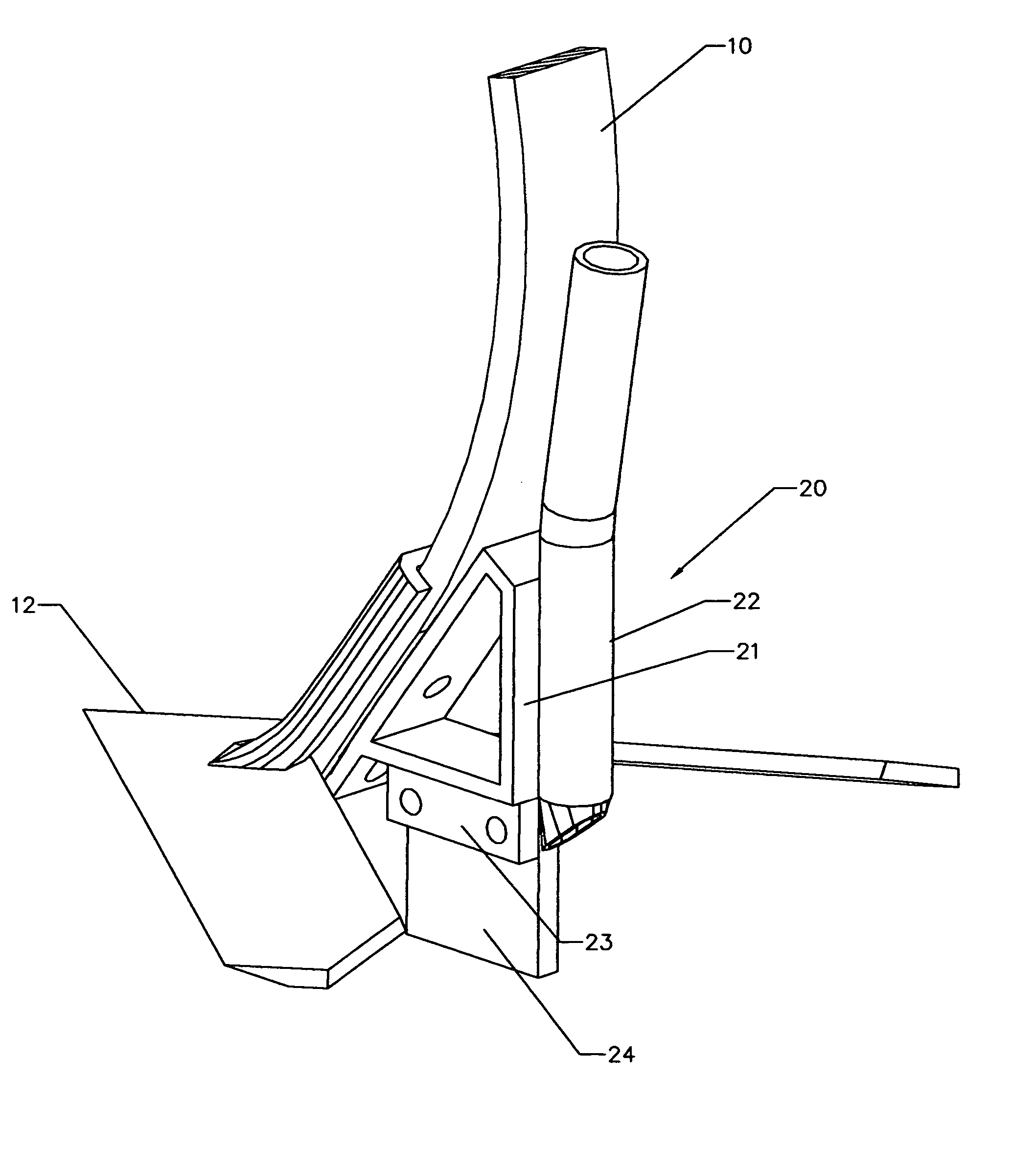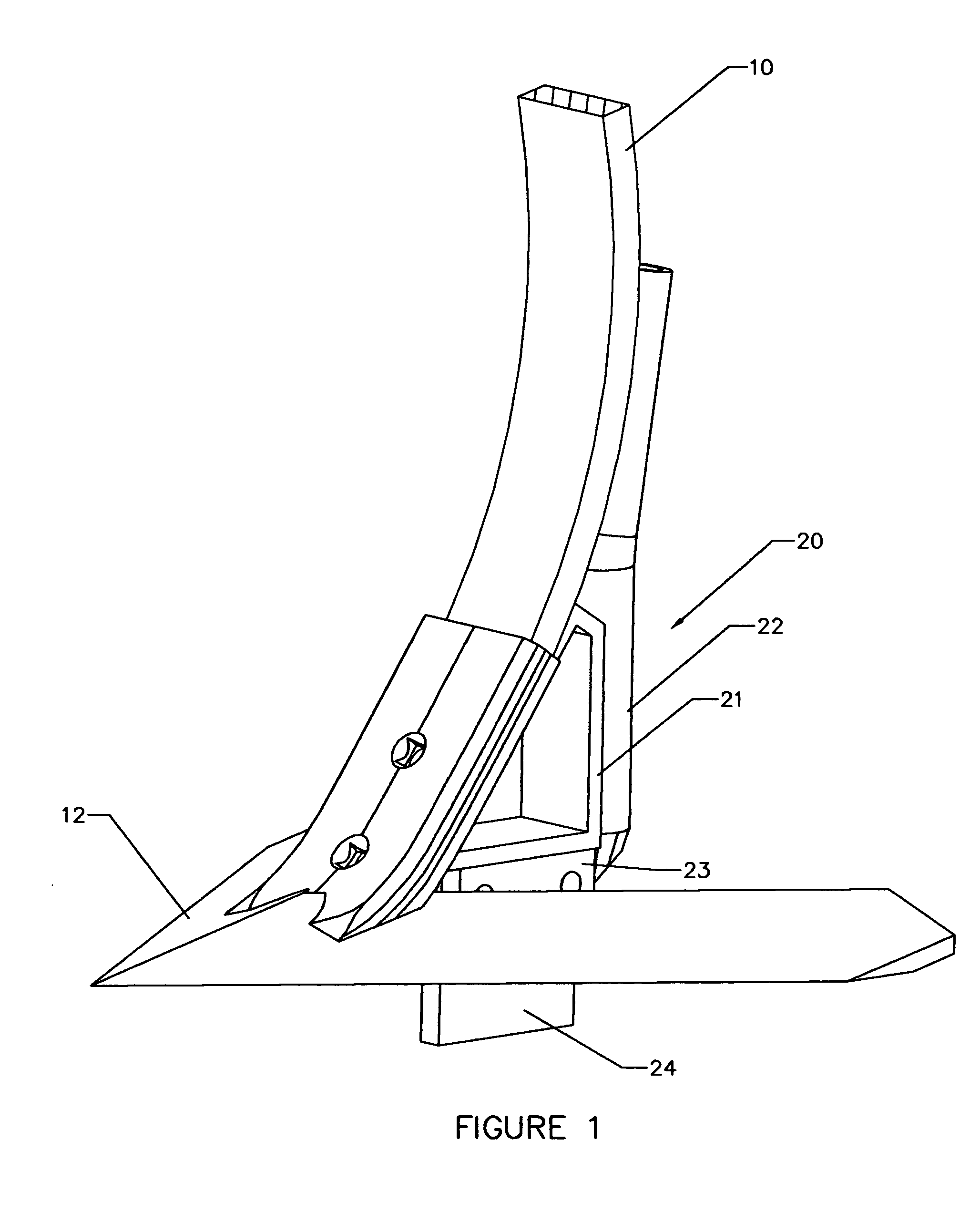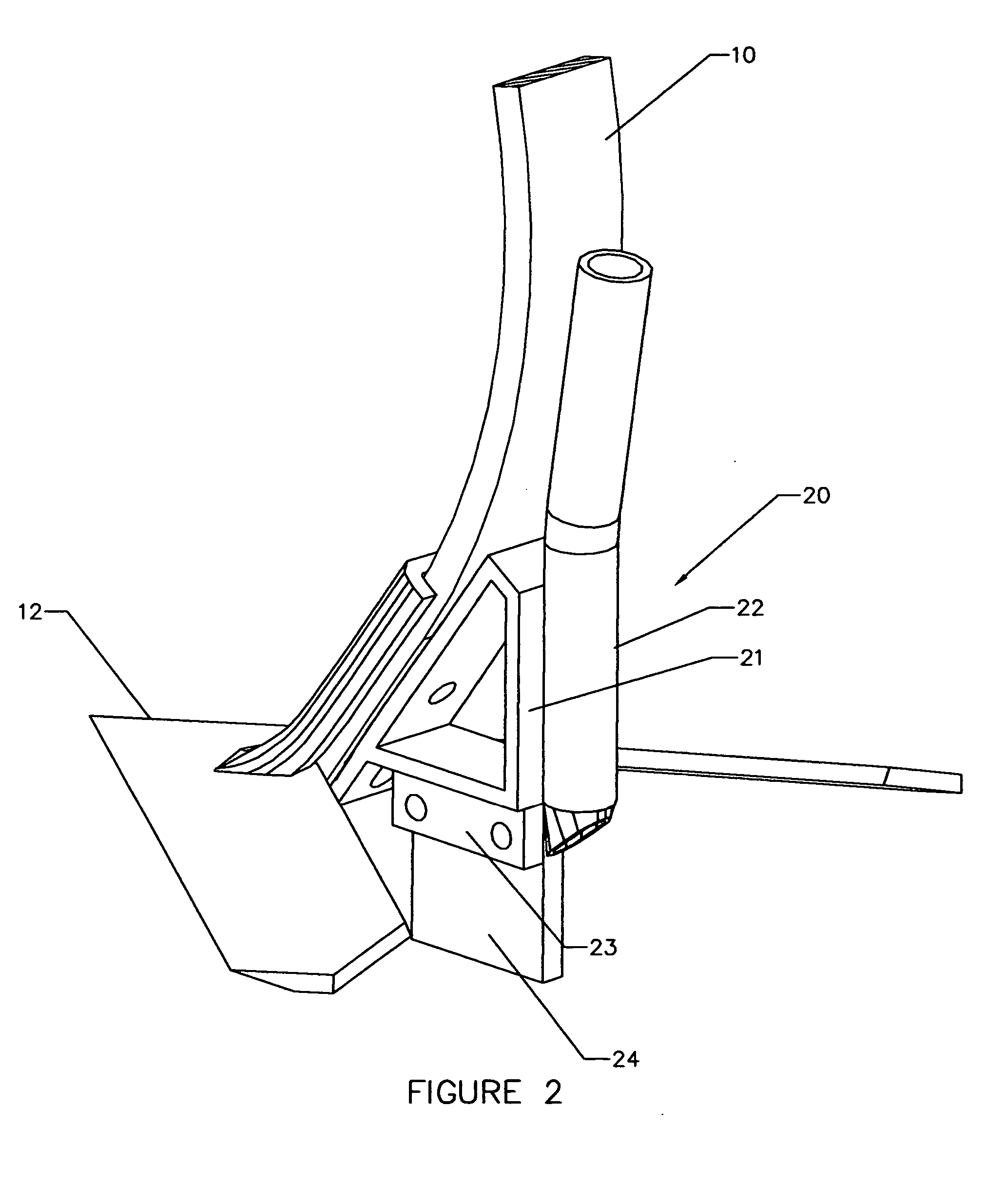Seed boot attachment
a technology for seed boot and attachment, which is applied in the field of seed boot attachment, can solve the problems of poor seed bed, time and expense of the tractor, and the cost of purchasing additional planting equipment, and achieve the effects of less expensive, less labor, and long field hours
- Summary
- Abstract
- Description
- Claims
- Application Information
AI Technical Summary
Benefits of technology
Problems solved by technology
Method used
Image
Examples
Embodiment Construction
[0043] Referring now to the drawings for a detailed description of the invention, reference numeral 10 identifies a conventional shank and 12 identifies a common, commercially available sweep shovel as shown best in FIGS. 1 and 2. These units may be of varying styles and sizes. The sweep shovel is configured such that it has a downwardly inclined angled flange on the leading edge and is bolted to the shank by an upwardly turned flange with two holes in order to mount it to the shank. The shank, is used to mount each individual unit onto the frame of the overall air seeder implement, chisel plow or cultivator, consisting of several units in a staggered side by side arrangement, which in turn is pulled along by an agricultural tractor, which has not been illustrated.
[0044] The novel aspects of the Seed Boot Attachment does not lie with the air seeder implement, chisel shank, or sweep shovel but rather, in the attachment itself, indicated broadly by the numeral 20. In the particular f...
PUM
 Login to View More
Login to View More Abstract
Description
Claims
Application Information
 Login to View More
Login to View More - R&D
- Intellectual Property
- Life Sciences
- Materials
- Tech Scout
- Unparalleled Data Quality
- Higher Quality Content
- 60% Fewer Hallucinations
Browse by: Latest US Patents, China's latest patents, Technical Efficacy Thesaurus, Application Domain, Technology Topic, Popular Technical Reports.
© 2025 PatSnap. All rights reserved.Legal|Privacy policy|Modern Slavery Act Transparency Statement|Sitemap|About US| Contact US: help@patsnap.com



